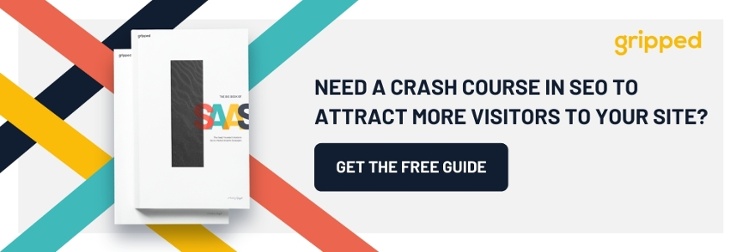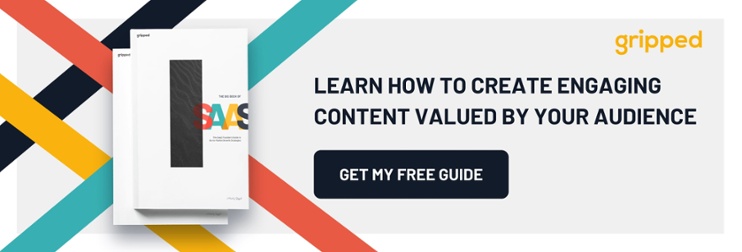When to Use What Inbound Marketing Channels
89% of B2B buyers research potential suppliers online. Even for the most complicated products, a phone call is now relegated to the end of the sales process. That means using the internet to build brand awareness and initiate engagement with customers.
Inbound marketing is about attracting early stage buyers and retaining their interest throughout the self-service stage of the sales process. Successful inbound marketing caters to the customer habits that have evolved in the online sales experience.
Inbound marketing isn’t about doing ‘one thing’. You need to engage every channel at your disposal. The trick is doing it the right way. This is a guide to the major inbound marketing channels, covering social media, paid advertising, content marketing and email. It will provide insight into when they are best deployed and how to do so properly. We need to start, however, with SEO.
The Basics of Inbound Marketing: SEO (Search Engine Optimisation)
SEO is not a channel, it is an approach to an outcome. Everything about online marketing comes down to SEO. It is how you influence your visibility online.
You can think about your visibility within certain platforms, such as your influence on social media. But, SEO is primarily about your Google search ranking. As will be covered below, social media can be used to influence this. Making regular posts, updates and using related social media all will increase your ranking through marking your website as ‘live’.
To start with, however, there are two broad categories of SEO: on-site SEO and off-site SEO.
Off-site SEO is how the actions of the wider world impact your search rankings. Chief among these are shares, likes and links, along with traffic volume and comments. Links are particularly important if coming from reputable, popular and relevant sources. Although off-site SEO is important, there is little you can do to influence it other than wait.
On-site SEO covers the things over which you have direct control. This includes keywords, embedded links, landing pages, meta descriptions and the load speed of your website. Keywords are divided between long tail keywords (niche phrases only likely to be used by a particular target market audience) and short tail keywords that are generic but have higher traffic volumes. These onsite SEO techniques should be built into everything you do online – your website, social media posts, content marketing and strategies for paid advertising campaigns.

What to Know About Online Paid Advertising
Online paid advertising allows you to cut through competition and temporarily improve your SEO ranking. It maximises the chances of being seen by the right person. You can buy ranking for search phrases with Google AdWords, or social platforms through Twitter Ads or Facebook Lead Ads. There are then ‘banner ad’ options that are triggered by an event, such as someone visiting your website.
How To Use Keywords and Ad Buy
For search phrases, consider purchasing ad space for long tail keywords and short tail keywords. Long tail phrases will likely be cheaper. Getting on the front page of Google for a generic term will bring in traffic, but it might not bring in more customers than ranking for a highly relevant long tail search phrase. This is particularly true in competitive and niche spaces, such as SaaS vendors.
Pricing Models
There are different pricing models for paid advertising. The most common is pay-per-click (PPC) — you pay for an ad when it is clicked on. This is standard on social media platforms and Google. PPC is also interchangeably called ‘cost-per-click (CPC)’. The same goes for all of the other billing methods, for example, cost-per-view (CPV) and pay-per-view (PPV).
Pay-per-view (PPV) and, price-per-thousand-impressions (PPM) are the next most common billing methods. They, again, are what they sound like. PPV deals should be approached with scrutiny, however, because different providers offer different calculations of what qualifies as a ‘view’. More specific PPV style plans include ‘cost-per-like’ payment options used on social media and pay-per-action (PPA) programmes where you are charged for specific actions such as downloading an app or filling out a form.
Consider all billing methods in the context of what you want to achieve through your campaign and the platform on which you are purchasing visibility.
Use Paid Advertising to Drive Organic Traffic
Whenever engaging in paid advertising, think about both its short-term and long-term impacts. An important goal for the use of paid ads is to drive the necessary traffic to jump start your organic search rankings. This is also why paid ads are best used in conjunction with social media and content marketing.
Using Social Media as a Marketing Strategy
Social media is a well-established part of B2C marketing campaigns. Its relationship to B2B businesses is more complicated but nonetheless critical. It can be used organically through personal accounts or with paid advertising placements. There is no hard and fast conversion rate. This will depend on your influence, industry and brand. The major benefit, however, of social media is that it is quick, easy and repeatable.
Paid placements offer a greater guarantee of getting in front of the right person. However, the added benefit of both paid and organic social media use is that it generates a boost in your SEO ranking. Online ‘activity’ is an important factor that contributes to how search algorithms judge your entire network.
Social media is itself divided into subcategories, all of which have different value to different audiences. For B2B businesses, LinkedIn, Twitter and Facebook are your primary assets.
LinkedIn is the obvious ‘go to’ for B2B marketing. Research by the Content Marketing Institute shows that 94% of B2B businesses engage on LinkedIn. That means, however, that it is competitive. Facebook is considered a ‘personal’ platform, but it is the world’s largest social media platform. Facebook use reaches a wide audience.

Twitter is smaller than Facebook but larger than LinkedIn. Its greatest asset, however, is high interactivity. Some companies use Twitter for customer service. The free analytics services offered by Twitter also make is it easy to benchmark your influence against competitors.
How to Make Social Media Work For You
You need to do two things to make social media work for you. The first is to be a regular user and develop a network. Paid advertisements are great. But, curating a personal network of people who are interested in your brand provides a cheap and effective method of communication. The more you use social media, the more your influence will grow.
The second factor is to make compelling offers. Simply linking your website isn’t enough. You need to provide something interesting. That could be news articles that are relevant to your business or target market audience. A more coherent campaign could be constructed around sales, free trials or content marketing. Social media works particularly well in conjunction with content marketing and ‘premium’ content offers.
Content Marketing: The Foundation of B2B Inbound Sales
Content marketing has been used with great success by B2B businesses in recent years. But there are many businesses who ignore this foundation to inbound lead generation. Content marketing, more than any other channel, embraces the customer-led nature of the internet by seeking to initiate customer interaction through providing added value.
Content marketing specifically caters to the observation that customers use the internet to educate themselves on purchases by identifying those questions and then answering them, in detail, online.
This is often done in the form of a blog. You simply have to write about what you know. This draws in prospects and provides an opportunity to demonstrate expertise. The more complicated your industry, the greater the likelihood that customers will search for information, and the greater your opportunity to provide value.
Beyond blogs, content marketing can include anything that adds value to a customer’s decisioning process. eBooks, white papers, templates and webinars are all examples of content marketing. SaaS companies can also provide free trials. If deployed correctly, case studies and customer reviews can be used for content marketing purposes.
The Power of a Premium Content Offer
Free trials, eBooks, webinars, templates and white papers are all forms of what is more accurately called ‘premium content’. This is differentiated from ‘open’ content marketing in that the perceived value of the offer is great enough that you can ask for something in return, namely, an email address, allowing you to move beyond ‘brand building’ to identify leads.
- For an example of a premium content offer and more information about how to use eBooks to generate leads, look here.
Where Content Marketing Sits in Your Sales Funnel
Content marketing and ‘premium content’ build on each other. Premium content should be a step in an online sales funnel that starts with ‘open’ content marketing. Open content, itself, builds on social media promotion, paid advertising and a good website. The added value of content marketing makes it a great thing to share on social media.
Blogs are a great tool for SEO purposes. They are a good avenue to build up comments, likes and links when providing engaging and meaningful material. The long-form nature of a blog also allows for high keyword saturation without going overboard on density. The number of posts allows you to experiment with multiple keyword phrases.
You can purchase pay-per-click advertising for content marketing. This is particularly advisable if competing in a highly competitive keyword space. This can allow you to build up the traffic history necessary to compete organically.
In any case, content marketing has a compounding return on investment. As you publish more content, all of your material will slowly climb in search results. The whole self-supporting system can provide a stream of inbound leads for years to come.

Using Email for Inbound Marketing When It Matters
Email is still often ranked as the most productive B2B marketing channel. Marketing Insider Group calculates that average businesses earn $44 in revenue for every single dollar spent on email marketing. This is no doubt fueled by its collaborative use with other inbound methodologies. However, automated lead scoring and analytics algorithms have allowed for targeted email campaigns.
Email, however, shouldn’t actually be considered an inbound strategy. It is truly a bridge between the inbound and outbound functions of your sales funnel. You want to collect email addresses through premium content offers, or other databasing techniques, and then use email as a means to deliver further inbound material — either content marketing, deals, or product information. Use email as a means to continued engagement and lead assessment. As with all inbound strategies, they are more effective when used in tandem. Email sits further down your sales funnel in the follow-up stage.
Summary: Think About Your Inbound Marketing Channels as a Self-Supporting Network
Inbound marketing is about engaging multiple channels to pull leads into an interconnected network. To do that effectively, you need to provide added value to your target market audience.
Social media sits at the top of your funnel, along with choices about how to augment your ranking in social channels and search engine results through the use of paid advertising.
These two options provide an avenue to promote content marketing — information that directly benefits the customer’s purchasing journey through providing information. This is a valuable means of increasing brand awareness and demonstrating your expertise. Content marketing, then, is itself an opportunity to make a ‘premium content offer’ — which can also be directly promoted on social media.
If you can get compelling ‘premium content’ offers in front of the right people, you will be able to gather contact information and generate a ‘lead’. This enables you to follow up with an email and continue to progress that person through your sales process.
General Tips To Think About When Building You Inbound Campaign:
Target your audience: You need to know your target market audience. In fact, you need to subdivide your target audience into different personas for which you can curate dedicated content and social media posts.
Always think about SEO long tail: A big part of thinking about specific audiences is creating and embedding unique keyword phrases. If you can hit on a specific phrase with little competition you will be able to communicate directly with the people looking for your products or services.
Stay Active: Regularly update your blog, use social media, update portions of your website. This is vital for retaining an audience and maintaining SEO ranking. Inbound marketing is about constant engagement.
Use PPC for organic outcomes: Never invest in PPC campaigns simply for the sake of it. Think about how you can use it as an opportunity to drive traffic to content marketing that will grow its organic footprint. PPC is most economically used as a way to break into competitive organic spaces and set yourself up for long-term organic traffic.
Focus on the most important information first: When asking for contact information, don’t make people answer a litany of questions. If you just ask for a work email, you increase your click-through rate.
Score, segment and assess results: If you want to improve outcomes, you need to keep track of what you are doing. That means taking the KPIs of campaigns and comparing them internally and against industry benchmarks. You should also track and sort leads and contacts to make sure that you are interacting with them in the most productive way possible.
Inbound marketing is an ongoing process that compounds in value the more you engage with it. Everything about the internet comes down to SEO. Your visibility will increase the more you post, the more you blog and the more people interact with your web presence. Inbound marketing requires patience, perseverance and high-quality content. When done right, you will generate a long-term and self-sustaining stream of inbound leads at an ever decreasing cost.
